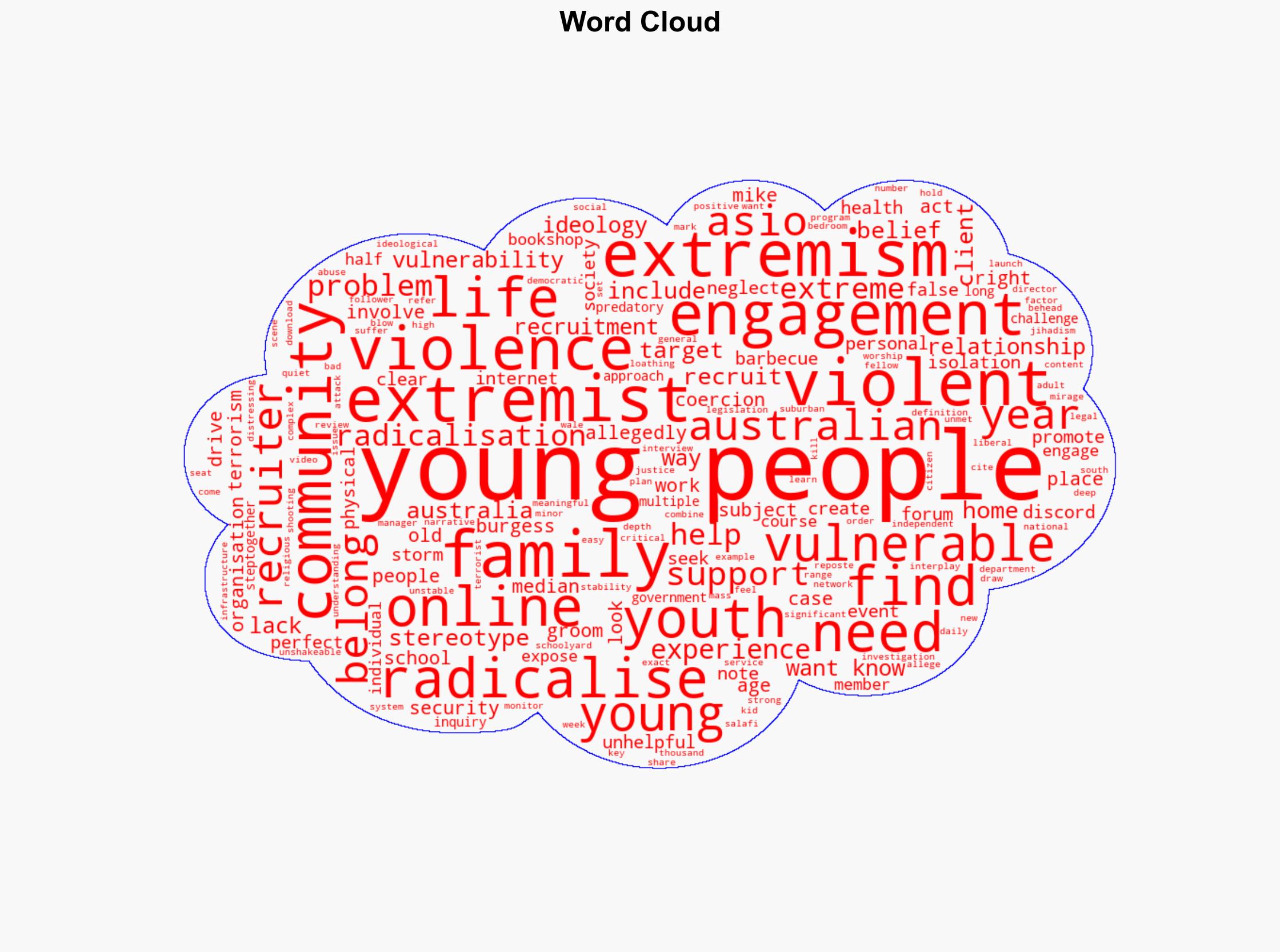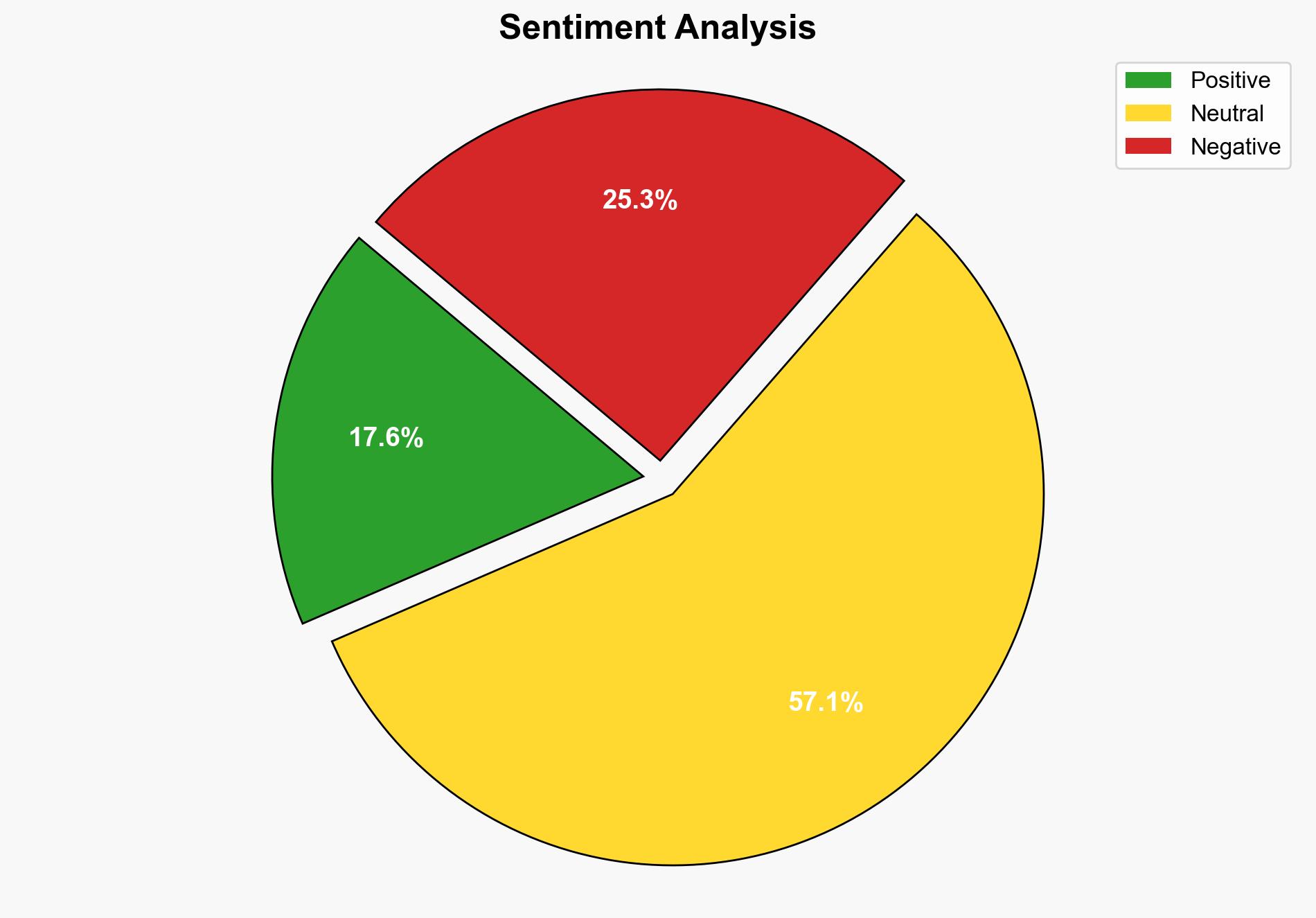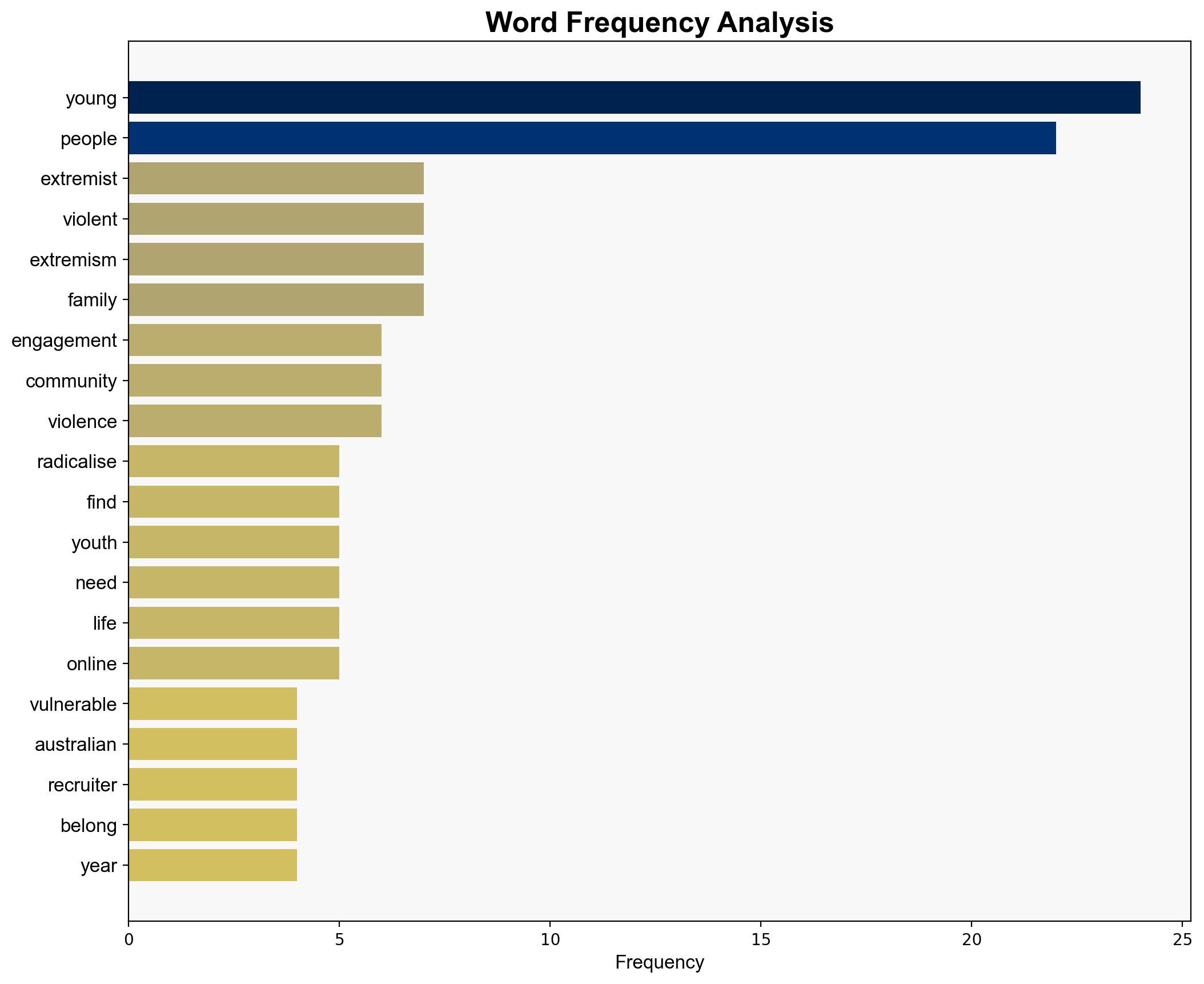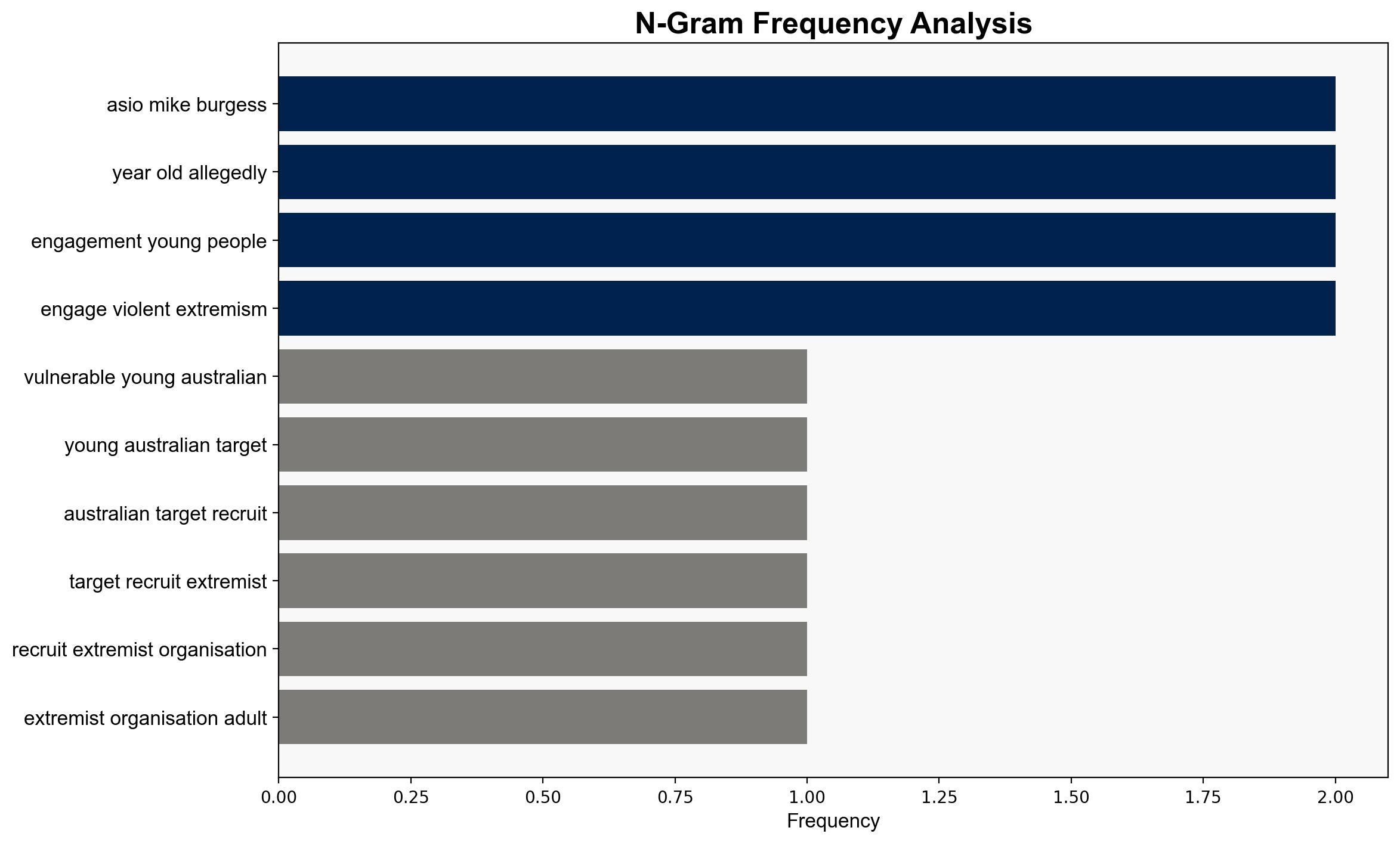Extremists are targeting young Australians who crave belonging What can we do – The Conversation Africa
Published on: 2025-08-21
Intelligence Report: Extremists are targeting young Australians who crave belonging What can we do – The Conversation Africa
1. BLUF (Bottom Line Up Front)
The most supported hypothesis is that young Australians are being targeted by extremist groups due to their vulnerabilities and a desire for belonging, which is exacerbated by online interactions. Confidence Level: Moderate. Recommended action includes enhancing community engagement programs and strengthening online monitoring to prevent radicalization.
2. Competing Hypotheses
Hypothesis 1: Young Australians are targeted by extremist organizations primarily due to their vulnerabilities, such as social isolation and unstable life experiences, which make them susceptible to radical ideologies.
Hypothesis 2: The primary driver for young Australians being targeted is the strategic use of online platforms by extremist recruiters, which effectively exploit the digital presence and curiosity of youth.
Using Bayesian Scenario Modeling, Hypothesis 1 is better supported as it accounts for both offline and online factors, whereas Hypothesis 2 focuses predominantly on digital interactions.
3. Key Assumptions and Red Flags
Assumptions:
– Vulnerability factors such as family discord and social isolation are primary drivers of radicalization.
– Online engagement is a significant factor but not the sole driver.
Red Flags:
– Potential bias in attributing radicalization solely to online activities.
– Lack of comprehensive data on offline interactions and their influence on radicalization.
– Possible underestimation of the role of ideological indoctrination in physical settings like schools and community centers.
4. Implications and Strategic Risks
The radicalization of young Australians poses significant risks, including increased domestic terrorism threats and societal polarization. There is a potential for cascading threats if online radicalization networks expand unchecked. Economic implications include increased security costs and potential impacts on community cohesion. Geopolitically, this could strain Australia’s international relations if domestic extremism is perceived as a growing threat.
5. Recommendations and Outlook
- Enhance community-based intervention programs to address root causes of vulnerability, such as social isolation and family discord.
- Strengthen online monitoring and counter-narrative campaigns to disrupt extremist recruitment efforts.
- Scenario Projections:
- Best Case: Successful intervention programs reduce youth radicalization rates significantly.
- Worst Case: Increased radicalization leads to a rise in domestic terrorism incidents.
- Most Likely: Continued moderate levels of youth radicalization with sporadic extremist activities.
6. Key Individuals and Entities
– Mike Burgess (Director General, ASIO)
7. Thematic Tags
national security threats, cybersecurity, counter-terrorism, regional focus





